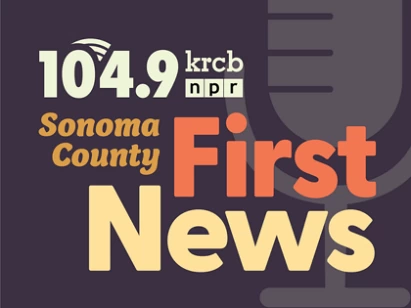
photo credit:
Announced last Wednesday, the counties are set to receive up to $10 million from the U.S. Department of Agriculture's Partnerships for Climate-Smart Commodities program, which is a federal effort to accelerate the implementation of climate-smart agricultural practices.
Though the exact grant amount is still to be set in November, the funds have the potential to provide up to 100 farms in the area with support for carbon farming techniques over the course of five years. This could reduce hundreds of thousands of metric tons of carbon dioxide emissions in the next 20 years, both counties said.
The partnership, labeled the Sonoma Marin Ag and County Climate Coalition, aims to form a regional supply chain of dairy and livestock products that use practices that either reduce emissions or sequester carbon, also known as "carbon farming."
"Carbon farming" is a holistic approach to optimizing a landscape's capacity to store carbon in its plant material and soil, while also improving its overall resilience to farming practices.
There are about 35 techniques that are recognized by the Natural Resource Conservation Service as adequate ways to enhance rates of carbon capture, depending on the industry and the landscape.
For example, in the livestock and dairy industries, carbon farming can include adding compost in soil to not only increase its organic matter content, but to increase the soil's water retention in times of drought. The service predicts that a one-percent increase in soil organic matter has the potential to hold an additional 20,000 gallons of water per acre.
Nancy Scolari, executive director of project partner Marin Resource Conservation District, said the county has already successfully transitioned 20 farms to carbon farming, and with this funding, they'll reach 30. A lot of work has already been done on the ground to help farmers with established, multi-generational operations transition to greener practices, and a percentage of this funding will be dedicated to reaching out to more struggling farms.
"They need a little more assistance, a little more aid in getting those practices implemented on the ground," Scolari said. "I think that's what the beauty of this grant is, that it's going to help us design a new way to work with a more extended farming community."
She said there's a long waitlist of producers eager to transition to carbon farming.
"We don't have a fear of people not participating, it's more like, 'do we have enough funding to help everyone that is on the list?'" said Scolari. "It's well-received -- either folks are out there trying to reduce greenhouse gases or they're trying to sequester carbon."
Valerie Minton Quinto, executive director of the Sonoma Resource Conservation District, said Sonoma County has completed about 35 carbon farm plans, and this grant will nearly double that number. She said the pilot program will balance planning and implementation throughout the five years, as the work is site-specific.
"I think that often government funding tends to favor the more implementation side of 'Let's just get something done on the ground,' and that's super important to us," said Quinto. "RCDs are doers and that's really where the rubber hits the road, but we also know that it will be most valuable and effective if we do thoughtful planning."
Because both conservation districts have already started establishing a foundation in the region implementing concepts that seem to work well for local land uses, Scolari said the potential to get this message out to the consumer is the next step.
"I think it's exciting to kind of share that message with a wider audience, with the people who are actually consuming this stuff. They have a much greater stake in how their purchases can help manage our landscapes," said Scolari.
Andy Naja-Riese, CEO of the Agricultural Institute of Marin, said that successful carbon farming does not just end at the farm -- it's also about ensuring these climate-friendly agricultural products move their way to local farmer's markets and grocery stores and encouraging the public to buy them.
The region is seeing a greater demand for local and organic foods across all income levels, he said, and this grant will help launch an EBT program at farmers' markets so low-income families can buy local, organic and regenerative meat and dairy products.
Making local products more accessible to the public also ensures that small farm owners can stay afloat amid drought, inflation and labor shortages, Naja-Riese said.
Soon to come is a region-wide marketing campaign to spell what climate-smart agriculture really is, as it "isn't exactly a household concept," he said. The counties will create 100 virtual stories of local farmers using carbon farming techniques on their lands.
"The more money that's spent locally, the more it gets recirculated in our economy too. The more we can get people to sell local, responsible products, the more we can help people to buy them. It helps to ensure people will have food security and it also supports our local food system," Naja-Riese said.
Anna Yip, climate analyst for Sonoma County, said county plans for climate resilience are important, but she continuously hears from residents about how they can make a difference in mitigating climate emissions. Including consumers in the conversation gives them a chance to do so, she said.
"We live in a very special place in both Sonoma and Marin counties where people are passionate and engaged and want to do stuff," said Yip. "I think that this project will give people something that they can do."
The Biden-Harris Administration in February pledged to contribute $2.8 billion to agricultural pilot projects from local governments, small businesses, nonprofits and other organizations. The USDA predicts that the 70 selected projects -- picked out of a pool of hundreds of applicants -- will engage over 25 million acres of land in climate-friendly techniques like cover crops, no-till and nutrient management.
The USDA is continuing to evaluate proposals for the second round of funding that focuses on small farms and those in "minority-serving institutions" and is set to announce awardees later this year.
"America's farmers, ranchers, producers and forested landowners have never shied away from tackling big challenges," said Secretary of Agriculture Tom Vilsack in a press conference. "I know they are proud of what they do every single day and what they contribute to our great nation. And I know that they're also anxious to pass on the farm, the field and the forest in better shape to the next generation."

 Live Radio
Live Radio




